Ever since the human genome was first sequenced in 2003, the demand for genetic testing has exploded. Our genes seem to reveal our medical fortunes, and many of us want answers to pressing concerns — such as how likely we are to get breast cancer or to develop Alzheimer’s disease. In 2010, Americans shelled out an estimated $5 billion on molecular and genetic tests, and according to a recent white paper published by UnitedHealth Group, that figure could soar to $25 billion in the next five years.
This doesn’t surprise proponents of genetic testing. The possibility of potentially staving off various diseases — or at least getting a jump-start on treating them — is intriguing.
“We’re in a healthcare revolution,” says biochemist Jeffrey Bland, PhD, author of The Disease Delusion: Conquering the Causes of Chronic Illness for a Healthier, Longer, and Happier Life. He says the burgeoning field of genomics is as important as the advent of the infectious-disease model at the beginning of the 20th century, when scientists identified the role of microorganisms in disease. “Today you have the power to choose your own path. I believe there has never been a more exciting time in medicine.”
Not everyone is as optimistic about the brave new world of gene testing. Some fear it will breed a nation of hypochondriacs who will always be looking over their shoulders for the diseases that might come their way. Or that it may encourage parents to seek “designer babies.” There’s also concern that gene testing could lead to a loss of privacy as insurance companies and others prey upon genetic data.
Still others question what the tests can truly reveal. Although there are currently more than 60,000 gene-testing products available to Americans and about 10 new genetic tests entering the U.S. market every day, the field of genomics is still in its infancy. Scientists continue to unravel the mysteries of the genome, and this affects both the design and interpretation of any future tests.
“We’re still at a very immature state of testing,” says Jeanette McCarthy, MPH, PhD, a genetic epidemiologist and adjunct faculty member at the University of California, San Francisco.
All of this can leave the average consumer confused about whether a gene test will be more harmful than helpful. And even this usually depends on a number of variables.
If you’re thinking about having your genome sequenced — or getting any of a range of genetic tests — experts recommend keeping these six factors in mind.
1. Your DNA Is Not Your Destiny
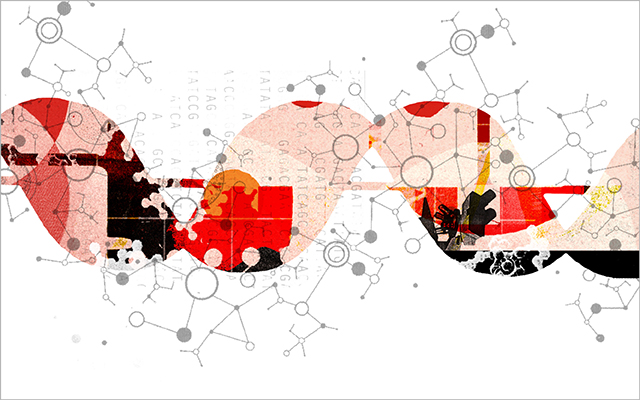 Illustrations by Alex Williamson
Illustrations by Alex WilliamsonAside from some extremely rare single-gene diseases, such as cystic fibrosis, Huntington’s, and sickle cell, most diseases are multifactorial, and a variety of circumstances contribute to their onset. This means that genes may load the gun, but environmental factors pull the trigger, especially for chronic illnesses such as type 2 diabetes, arthritis, heart disease, and cancer.
“For the most part, genes are not deterministic when you talk about common diseases,” McCarthy says. “Genes are your potential, but they require a certain environment in order to be expressed.
“Those environmental factors — whether it’s your diet, your lifestyle, or something else that affects gene expression — can often override a genetic predisposition. Even people who inherit BRCA1 mutations aren’t guaranteed that they will get breast cancer.”
Randy Jirtle, PhD, a North Carolina State University epigeneticist who researches genomic imprinting (the study of parent-specific gene expression) and how environmental factors affect the function of these genes, concurs. “Many geneticists [mistakenly] think the genome is the only thing there is,” he says.
Jirtle studies the epigenome, the group of chemical compounds that are attached to DNA but not actually part of the DNA sequence, to better understand how genes and environment interact (see “Glossary of Genetic Lingo,” below, for more).
He suggests thinking of the genome as a computer’s hardware, and the epigenome as its software. If computer-repair experts focused strictly on chips and hard drives, he says, they’d often fail, because “many problems are in the software.”
The fact that our “software” is powerfully influenced by environmental factors can be good news. It means our lifestyle choices still matter — a lot.
2. Genes Are Modified by Other Genes
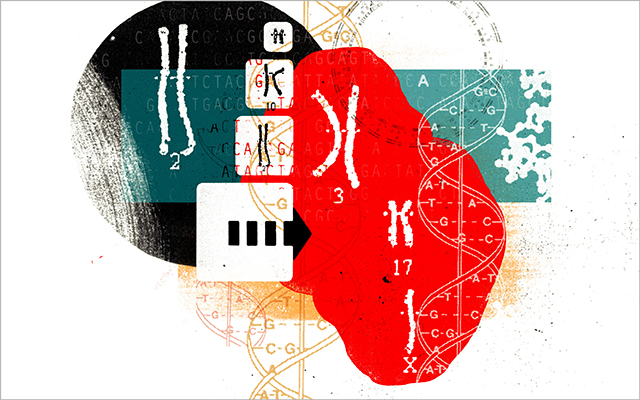 Illustrations by Alex Williamson
Illustrations by Alex WilliamsonNot only are genes affected by envi-ronment, but they’re also modified by other genes — and the current crop of genetic tests does not pick up on these myriad interactions, says Myrto Angela Ashe, MD, MPH, a family physician who practices functional medicine in San Rafael, Calif.
“There are so many steps between the genetics and the final expression of anything. It’s almost always multifactorial; the genes are all modified by each other,” Ashe explains.
As noted earlier, they’re also modified by the epigenome, a set of chemical compounds that are attached to DNA. Once labeled “junk DNA,” the epigenome now clearly “makes all the difference” when it comes to gene expression, says Ashe.
Current tests are limited to revealing single nucleotide poly-morphisms, or SNPs (pronounced “snips”). SNPs are small genetic variations that may affect how someone meta-bo-lizes nutrients, for example, or responds to a certain drug or environmental toxin. (For more on these genetic variations, see “Making Sense of SNPs“.)
SNPs, however, can be overridden. Consider caffeine, which is processed by an enzyme in the liver called the CYP1A2, says Robert Rountree, MD, a functional-medicine specialist in Boulder, Colo. People who have a “fast” version of CYP1A2 can metabolize caffeine quickly and so, theoretically, suffer fewer side effects. People with a “slow” version, on the other hand, do not metabolize caffeine well and are presumably more susceptible to caffeine jitters.
Yet it’s not that simple, he cautions. Caffeine works by blocking adenosine receptors in the brain and cardiovascular system, and potential genetic variations in these receptors can affect overall caffeine sensitivity.
“A person with a certain genetic variation in their adenosine receptors could still be sensitive to small amounts of caffeine, even if they are a fast caffeine metabolizer via CYP1A2,” Rountree explains. “Or a person could be a slow metabolizer via CYP1A2 but have a less sensitive [gene] variation in the adenosine receptor with a net effect of being relatively insensitive to caffeine.”
And then there are environmental influences. Lifestyle factors, like smoking cigarettes or eating charred meat, may make the CYP1A2 enzyme more active — thus accelerating the metabolism of caffeine.
This means a person with the slow variation can still become a relatively rapid metabolizer of caffeine by eating particular foods.
Rountree’s point? A genetic variation tells only part of the story, especially when taken out of context.
3. Who Will Interpret Your Results?
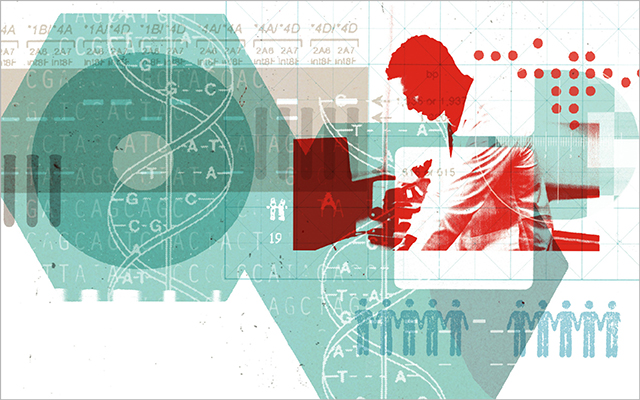 Illustrations by Alex Williamson
Illustrations by Alex WilliamsonThe steep rise in relatively cheap direct-to-consumer genetic testing has created a Wild West atmosphere in which many individuals order tests and are left to either interpret results on their own or look to the Internet for answers. Given the complexity of genomics, most experts agree it’s far better to have a trained practitioner read the results. On a practical level, however, this is easier said than done.
“I believe everyone has a right to their genome sequence and its interpretation,” says Michael Snyder, PhD, the genetics department chair at Stanford University and author of Genomics and Personalized Medicine: What Everyone Needs to Know. “Having said that, I think they should be educated responsibly about what it means. It can be emotionally trying, for example, to learn that you have a mutation that puts you at a very high risk for breast cancer.”
Some companies that provide genome sequencing offer interpretations by credentialed biomedical researchers, but they cannot address your specific situation — such as family history or environmental factors. You might also contact a genetic counselor. These professionals are often associated with family planning, but they are available to discuss a range of health conditions, including the results of a standard genetic test. Still, because genetic counselors are not healthcare providers, they can’t help you with a diagnosis or treatment protocol. For that, you still need a credentialed doctor.
And this presents its own challenges, says McCarthy, because there are not enough practitioners trained in genetics to keep pace with the massive consumer interest in genetic testing. Which means your doctor could be as mystified by your results as you are.
“One of the biggest bottlenecks that we’re going to face is healthcare-provider education,” she says. “Many [providers] have never had training in genetics. They feel like they don’t have the skills and it’s just easier to say, ‘I don’t want to deal with this.’”
Even among practitioners who are comfortable ordering genetic tests, how they use the information might differ based on medical philosophy. Rountree offers the example of a doctor who practices functional medicine, which seeks to treat the root causes of disease instead of just symptoms. She might use genetic testing to help unearth biochemical imbalances, or to detect a weakness in someone’s detoxification mechanisms, both of which can predispose someone to disease.
“A conventional doctor might say that a high LDL cholesterol level increases your risk of heart disease by a certain percentage,” he explains. This is very different from a functional physician recommending you increase your intake of certain nutrients because you have a SNP associated with cardiovascular disease risk.
4. Are You an Optimist or a Pessimist?
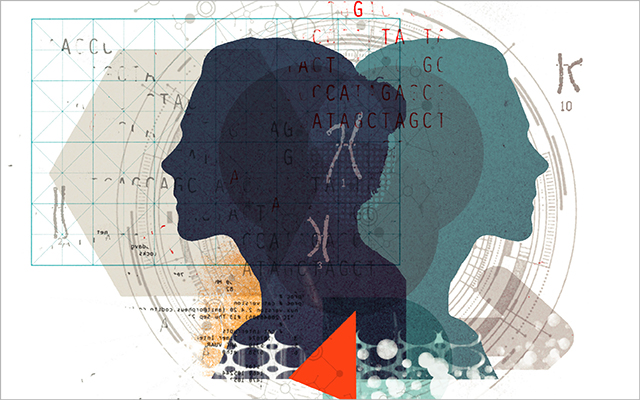 Illustrations by Alex Williamson
Illustrations by Alex WilliamsonWould you be inspired by the results of a genetic test to change your lifestyle? Or would you live in anxious anticipation if you believed you were at greater risk for developing a serious illness?
“There are some people who handle this information and think, ‘OK, well that’s the way it is. No big deal.’ There are others for whom it causes very real distress,” McCarthy says.
If you’re a worrier but still curious, Snyder suggests having your genome sequenced and then making it clear to your healthcare provider or genetic counselor that you don’t want all the information — only data that you can do something with or about.
“Some people just want the actionable information,” Snyder explains. Others are motivated by their findings. “I think when you see your own genome analysis, it’s a bigger wake-up call than ‘Well, yeah, your great-granddad had diabetes.’” Seeing that you carry a risk for a potentially preventable condition may be what makes it possible to adopt healthy behavior changes.
On the other hand, finding out about genetic conditions that can’t be prevented — like Huntington’s chorea, a neurodegenerative disorder caused by an inherited defect on a single gene that leads to debilitating cognitive decline — can have a serious impact on a person’s quality of life. This can potentially create a great deal of suffering and anxiety while he or she is still perfectly healthy.
“A lot of people don’t necessarily want to know that they’re going to get Huntington’s,” says Snyder.
This is why he emphasizes the importance of deciding ahead of time what kind of information you want — and don’t want — and being clear about that with your healthcare provider.
5. Privacy Concerns
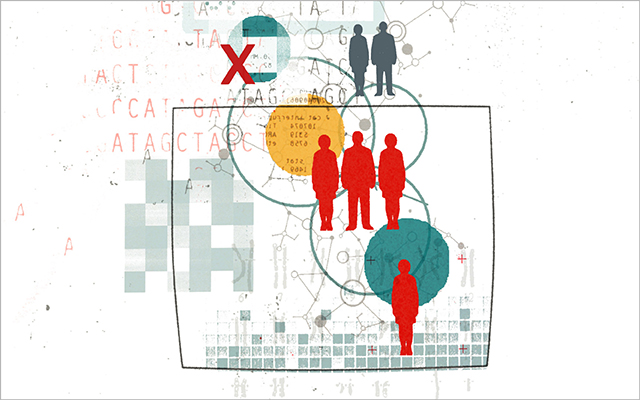 Illustrations by Alex Williamson
Illustrations by Alex WilliamsonSome people worry that their genetic information will be made public or used against them in some way. To address these concerns, genetic-testing company 23andMe hired a “privacy officer” last year to oversee customer confidentiality and consent policies.
At the same time, however, the company struck deals with big pharmaceutical companies, including Genentech and Pfizer, that are paying for access to 23andMe’s genetic database. Although the information will be both aggregated and anonymous, the data-sharing agreements didn’t allay all consumer fears.
The U.S. Genetic Information Nondiscrimination Act of 2008 (GINA) prohibits health-insurance companies or employers from discriminating on the basis of genetic information. Still, the law’s scope does not extend to long-term care insurance, life insurance, or disability insurance. So there’s always a risk, however small, that you could suffer consequences from having your genetic information available.
Bland offers a simple workaround: “My suggestion is to use an alias — don’t put your name to your genes.”
6. What Do You Hope to Learn?
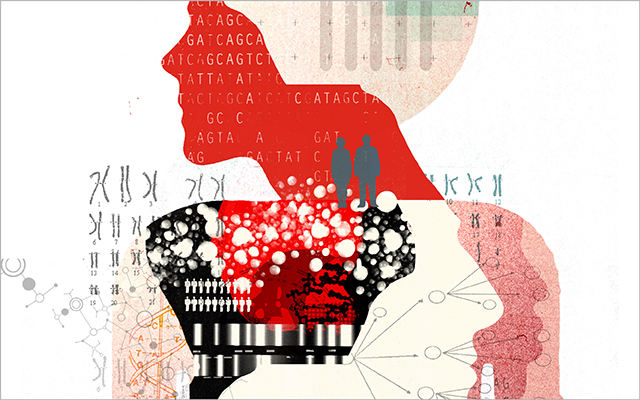 Illustrations by Alex Williamson
Illustrations by Alex WilliamsonAlthough genetic testing is inexpensive and readily accessible, it’s a good idea to think carefully about your overall goals and expectations before you test.
Until recently, common genetic tests focused on a few single-gene mutations known to cause disease and largely addressed family-planning concerns. For example, a couple looking to start a family might test to ensure they don’t carry the same mutated gene, which can result in an autosomal recessive disorder in their offspring. Such tests can provide vital information to a couple before they decide to have children, and make weighing the potential risks easier. (For more on this, see “Gene Testing and Family Planning,” below.)
Now that a person’s entire genome can be sequenced, the testing landscape has become decidedly more complicated.
In addition to ferreting out genetic variations that affect nutrient absorption and detoxification, one of the most promising applications for genetic testing, says Rountree, may be pharmacogenomics, which studies how genes affect a person’s reaction to particular medications.
“It’s not about predicting disease, and it’s not really even about wellness,” Rountree says. “It’s about making therapeutic decisions.”
He offers an example with the blood thinner Coumadin. “Generally, when you start people on Coumadin, it’s a total guess about how much they need,” Rountree says. “But if you do a genetic test and realize that someone is likely to metabolize it quickly, you would consider starting them on a higher dose.”
He adds that pharmacogenomics revealed that tamoxifen, used for decades to treat hormone receptor-positive breast cancer, does not affect all patients the same way.
“Some studies suggest that people who have a sluggish version of the CYP2D6 enzyme don’t get as much advantage from tamoxifen,” he says.
“So, if you’re going to put a woman on tamoxifen for five years, it might be worthwhile to do that genetic test to see if she’s a candidate or not.”
A less helpful approach, say many functional-medicine experts, is to pursue genetic testing to answer the question “What disease will I get?” Again, the vast majority of chronic diseases are multifactorial; the illnesses that couples test for prior to having children are among the rare conditions that are exclusively genetic. This makes it challenging to come up with an accurate risk assessment with a genetic test on an otherwise healthy adult.
“The criticism of these kinds of tests is that you get these very complicated percentages of risk,” says Rountree. “What does it mean to have a 0.23 percent increased risk of getting rheumatoid arthritis or a 4.6 percent increased risk of an autoimmune disease?”
When people view their genome from a disease-oriented perspective, they tend to fear it, says Bland. He believes that outlook drowns out the opportunities of genetic testing.
“A very small part of our genome is encoding things related to disease risk,” he points out. He says the “overwhelming majority” indicates how our bodies are likely to respond to certain environments, diets, and lifestyle choices.
Jirtle agrees. “The epigenome is variable — it responds to the environment rapidly, whereas the genome is very rigid,” he says. “I think of scientists who work solely with the genome as being comparable to people with huge steel chainsaws who are looking for more big redwoods to cut down. But, the biggest redwood out there is defining the epigenome and the changes that occur when it’s exposed to different environmental conditions.”
Put simply, this means most diseases are still best prevented through healthy lifestyle choices. So, whether you decide to test or not, exercising, eating real food, managing stress, and getting a good night’s sleep are still key to optimal health — now and in the long term.
This originally appeared as “To Test or Not to Test” in the December 2016 issue of Experience Life.
Glossary of Genetic Lingo
Genome: The total genetic material of an organism. For humans, this includes about 3 billion base pairs of DNA (deoxyribonucleic acid) that make an individual an individual; “coding regions” that code for protein sequences in the DNA; and “noncoding” regions (formerly called “junk DNA”) that researchers now recognize perform significant modifying and regulatory functions in DNA.
Epigenome: A “multitude of chemical compounds that can tell the genome what to do,” according to the National Human Genome Research Institute. Its proteins and chemical compounds modify and regulate gene expression.
Epigenetics: The study of environmental factors, both internal and external, that influence gene expression. These can include particular foods, life experiences, environmental toxins, and other potential triggers.
SNP: A single nucleotide polymorphism is a variation in a gene’s sequence. A single SNP may not cause a disorder, but some SNPs are associated with particular traits and health challenges.|
Gene Testing and Family Planning
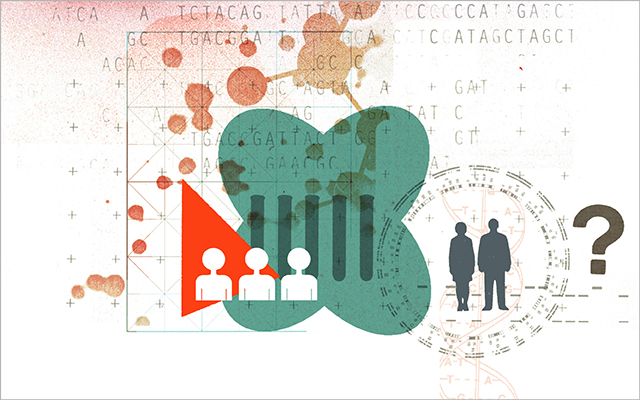 Illustrations by Alex Williamson
Illustrations by Alex WilliamsonThe differences between the two types of testing are small but significant, notes Cheri Schoonveld, MS, CGC, a certified genetic counselor at the University of Minnesota in Minneapolis. While genome sequencing seeks to identify an individual’s risk of developing a condition, like Alzheimer’s disease, family-planning tests focus on a different kind of risk.
“Individuals who are carriers are not at risk to develop the condition themselves; however, they are at increased risk to have a child with the condition.”
Because certain gene mutations are more common to particular ethnicities, the American College of Obstetricians and Gynecologists recommends that couples be offered carrier screening for heritable conditions associated with their ethnicity. Examples include cystic fibrosis for Europeans, Tay-Sachs disease for Ashkenazi Jewish families, and sickle-cell disease for families with African heritage.
Still, like all genetic tests, these predict only potential outcomes. “Most genetic conditions that are screened for require that both parents be carriers of the condition to have an affected child, and even if both parents are carriers, it does not mean that every child will have the condition,” Schoonveld explains. For autosomal recessive conditions like these, the risk that a child would be affected is one in four.
Schoonveld recommends couples consider carrier testing before pregnancy, so they can review the information without the “pressure and emotional charge” that a pregnancy involves. They can then decide to move forward, more prepared for possible outcomes, or to pursue other options, such as in vitro fertilization with genetic testing of embryos, or adoption.
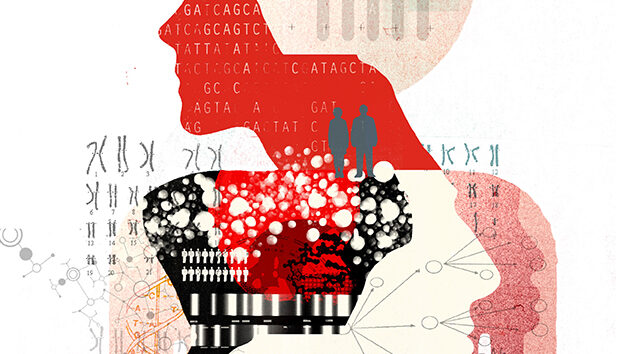

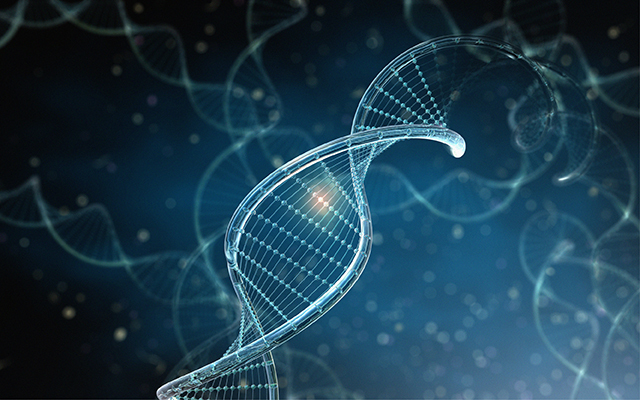

This Post Has 0 Comments